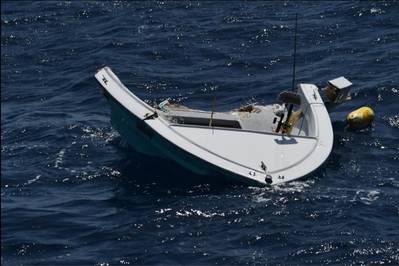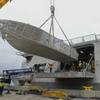Inadequate Lookout Leads to Collision Between Coast Guard Cutter and Small Boat -NTSB
The fatal collision between the U.S. Coast Guard cutter Winslow Griesser and a small boat off the coast of Puerto Rico last year resulted from the failure of either vessel to maintain a proper lookout, the National Transportation Safety Board (NTSB) said.
On August 8, 2022, the cutter Winslow Griesser and the center-console boat Desakata collided about four miles off the northern coast of Puerto Rico. The cutter, with a crew of 21, was traveling westward along the coast. The 23-foot boat, with two aboard, was heading northbound. As a result of the collision, one Desakata crewmember was killed and the other seriously injured. The boat was declared a total loss of $58,800. The cutter's commanding officer was relieved of duties following the incident.
Maintaining a proper lookout, by sight and sound, is a fundamental rule of the Convention on the International Regulations for Preventing Collision at Sea for vessels. NTSB investigators found that the bridge crew on the Winslow Griesser was not aware they had hit anything until a crewmember saw the center-console boat’s wreckage floating down the side of the cutter.
Leading up to the collision, neither vessel’s crew saw the other vessel, despite having the opportunity to do so. Neither crewmember on the Desakata was maintaining a lookout, as both were focused on fishing. And no crewmember aboard the cutter was designated solely as a lookout with no other duties. Coast Guard practice is that all members of the bridge watch are responsible for shared lookout duties. Investigators determined no one was maintaining a lookout at the time of the collision.
Contributing factors, investigators said, included the failure of the Winslow Griesser’s commanding officer and officer of the deck to take sufficient measures to increase situational awareness while the cutter was traveling at a high speed.
During the investigation, several crewmembers of the Winslow Griesser declined to speak with NTSB investigators. If the Winslow Griesser had been equipped with a voyage data recorder (VDR) the additional data and audio could help identify safety issues, resulting in safety improvements.
“The NTSB continues to investigate tragedies like this collision in which vessels are not maintaining proper lookout,” said NTSB Chair Jennifer Homendy. “Early detection of a vessel is critical to avoiding a collision. While technology does not remove the need to maintain a proper lookout, it can aid in early detection, which is why we are issuing a safety alert for small vessels to encourage installing a radar reflector and/or an automatic identification system transponder to improve their detectability.”
As a result of the investigation, the NTSB recommended the Coast Guard install VDR or equivalent capabilities on its cutter fleet. Electronic vessel data and bridge audio would have given investigators additional information on the collision. The NTSB also issued a safety alert encouraging owners of recreational boats and small commercial fishing vessels to install radar reflectors and use simplified automatic identification system transponders to improve their vessels’ detectability.
“As the only independent investigator of U.S. Coast Guard casualties, it is vital that NTSB investigators have information from voyage data recorders or equivalent capabilities to ensure a complete, timely and thorough investigation,” said Chair Homendy. “Voyage data recorders, like black boxes in airplanes, are one of the most valuable sources of information following a marine casualty and it is imperative that Coast Guard cutters be equipped with this technology.”











